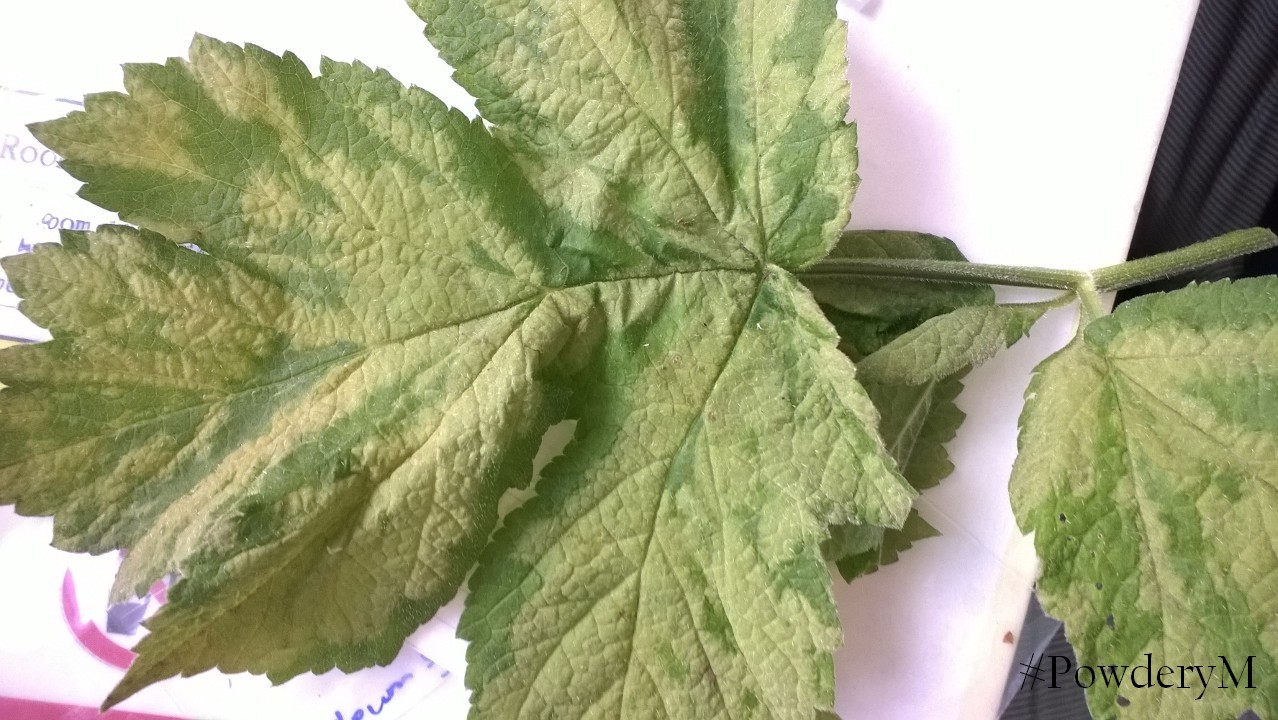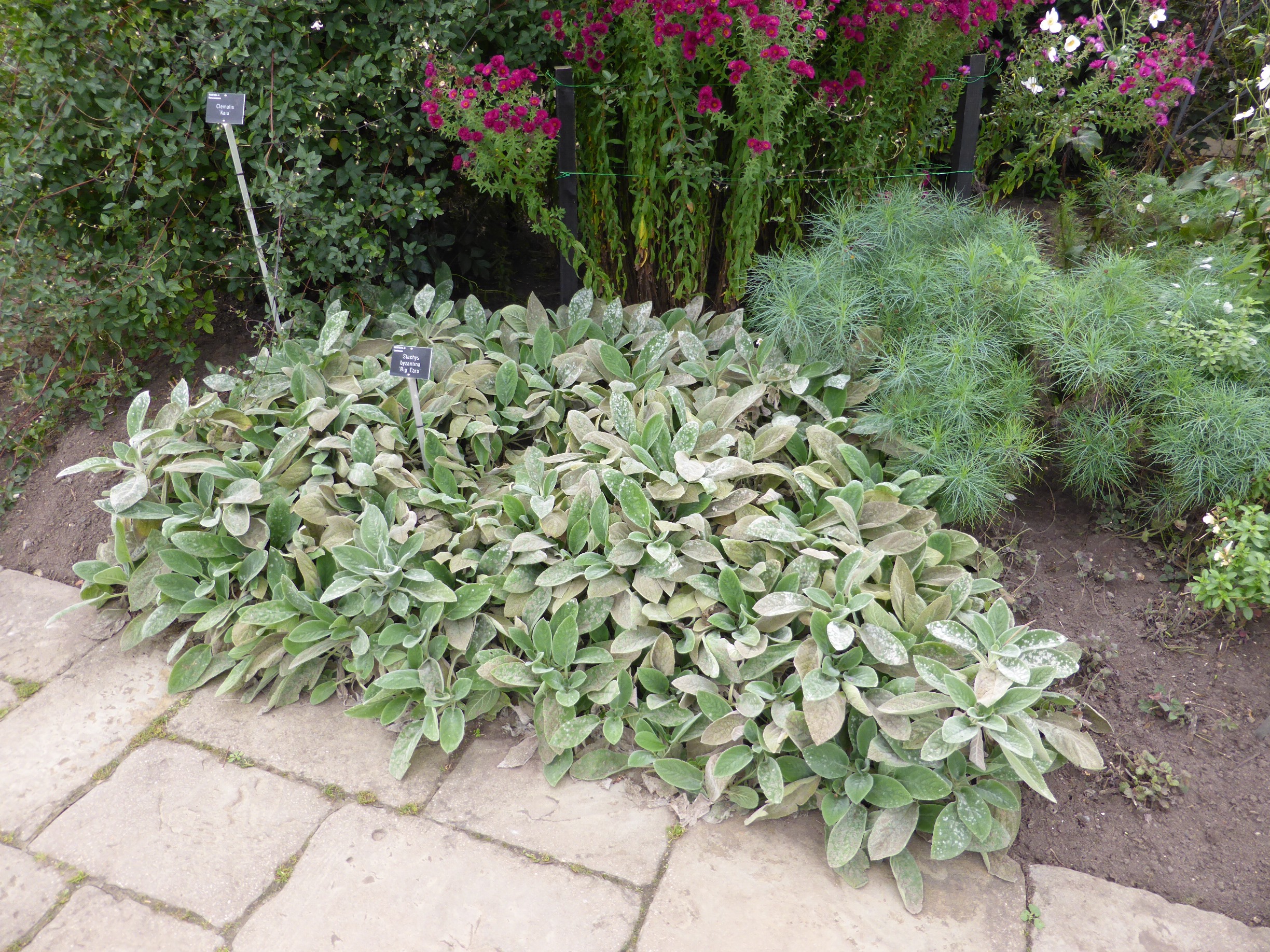Plants can be infected with a wide array of different diseases. Some of these can easily be misidentified; and this has become evident in the 2015 Powdery Mildew Survey.
Powdery mildews are just one of handfuls of different white structures on the surfaces of plants and one of many more infections to reduce the vigour, yield and beauty of our favourite garden plants and most important crops.
Powdery mildew can cause a number of different visible imperfections in their hosts: discolouratation is one such feature, but symptoms suc has that seen on the Heracleum below is more likely to be due to a virus.

Heracleum sp. also often have leaf hairs. This sample is also discoloured; a possible sign of powdery mildew but more likely to be a downy mildew or virus.
Powdery mildew typically forms a white, ‘talcum-powder-like’ coating on the surfaces of plants. But this feature is certainly not exclusive to the #PowderyMs: of the other fungi to spread their white, mycelial-forming hyphae the most prominent is Botrytis, a ‘grey-rot’ which kills its host. Below are some of my own samples with Botrytis causing confusion…

Botrytis (on Senecio jacobea) forms white strands on the surfaces of plants, these appear much more wispy than the powdery mildew.

Botrytis (right) appears in long strands forming an extensive ‘mycelial mat’ the strands of which can almost be picked off of a plant where as the powdery mildew is slightly less effuse
Finally the hairs typical on many plant species can catch the powdery-mildew-trained-eye and can easily be confused as surface mycelium. Below is an example of a Vicia sp. and of course a Stachys sp. on which it is particularly hard to identify a powdery midlew beneath its typical furry leaf covering.



Pingback: 2015 Powdery Mildew Survey Results | Culham Research Group